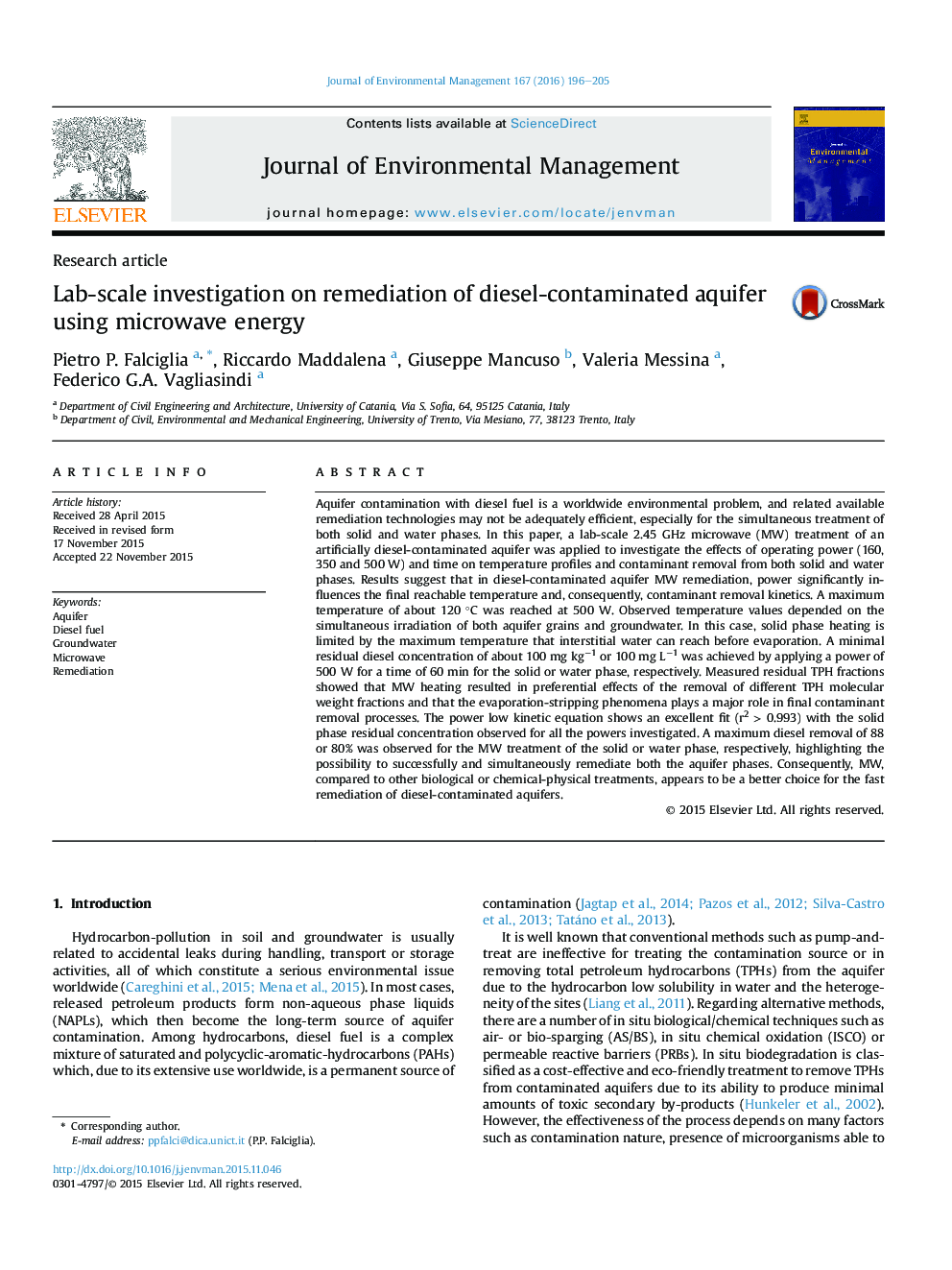| کد مقاله | کد نشریه | سال انتشار | مقاله انگلیسی | نسخه تمام متن |
|---|---|---|---|---|
| 7481298 | 1485245 | 2016 | 10 صفحه PDF | دانلود رایگان |
عنوان انگلیسی مقاله ISI
Lab-scale investigation on remediation of diesel-contaminated aquifer using microwave energy
ترجمه فارسی عنوان
آزمایشگاه مقیاس آزمایش در بازسازی آبیاری آلاینده دیزل با استفاده از انرژی مایکروویو
دانلود مقاله + سفارش ترجمه
دانلود مقاله ISI انگلیسی
رایگان برای ایرانیان
کلمات کلیدی
آبخوان، سوخت دیزلی، آب های زیرزمینی، مایکروویو، بهبود
موضوعات مرتبط
مهندسی و علوم پایه
مهندسی انرژی
انرژی های تجدید پذیر، توسعه پایدار و محیط زیست
چکیده انگلیسی
Aquifer contamination with diesel fuel is a worldwide environmental problem, and related available remediation technologies may not be adequately efficient, especially for the simultaneous treatment of both solid and water phases. In this paper, a lab-scale 2.45 GHz microwave (MW) treatment of an artificially diesel-contaminated aquifer was applied to investigate the effects of operating power (160, 350 and 500 W) and time on temperature profiles and contaminant removal from both solid and water phases. Results suggest that in diesel-contaminated aquifer MW remediation, power significantly influences the final reachable temperature and, consequently, contaminant removal kinetics. A maximum temperature of about 120 °C was reached at 500 W. Observed temperature values depended on the simultaneous irradiation of both aquifer grains and groundwater. In this case, solid phase heating is limited by the maximum temperature that interstitial water can reach before evaporation. A minimal residual diesel concentration of about 100 mg kgâ1 or 100 mg Lâ1 was achieved by applying a power of 500 W for a time of 60 min for the solid or water phase, respectively. Measured residual TPH fractions showed that MW heating resulted in preferential effects of the removal of different TPH molecular weight fractions and that the evaporation-stripping phenomena plays a major role in final contaminant removal processes. The power low kinetic equation shows an excellent fit (r2 > 0.993) with the solid phase residual concentration observed for all the powers investigated. A maximum diesel removal of 88 or 80% was observed for the MW treatment of the solid or water phase, respectively, highlighting the possibility to successfully and simultaneously remediate both the aquifer phases. Consequently, MW, compared to other biological or chemical-physical treatments, appears to be a better choice for the fast remediation of diesel-contaminated aquifers.
ناشر
Database: Elsevier - ScienceDirect (ساینس دایرکت)
Journal: Journal of Environmental Management - Volume 167, 1 February 2016, Pages 196-205
Journal: Journal of Environmental Management - Volume 167, 1 February 2016, Pages 196-205
نویسندگان
Pietro P. Falciglia, Riccardo Maddalena, Giuseppe Mancuso, Valeria Messina, Federico G.A. Vagliasindi,
